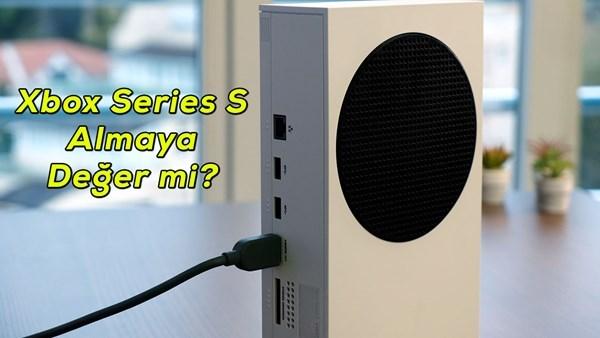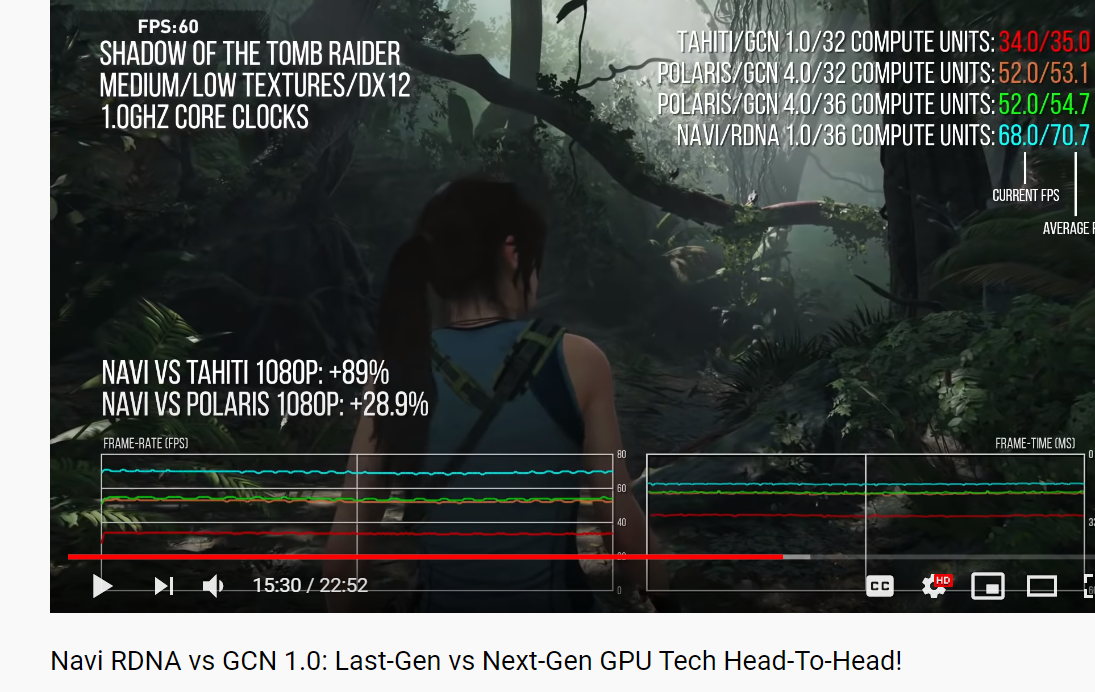
[ad_1]
Hi guys, we see phrases like “One X is stronger on paper” in forums and big review channels too.
First of all, the reason for the formation of this expression is that the S Series has 4 TFLOPS and the One X has 6 TFLOPS of graphics processing power.
I decided to write this complete article to clarify this issue and to shed some light on the event.
First of all, every graphics card is produced on the basis of a certain “architecture”. This is no different for consoles. Each graphics card is made according to the architecture used at that time by AMD or NVIDIA.
AMD announced the GCN 1.0 architecture in 2012 and released the graphics cards belonging to this architecture.
Then, in 2013, GCN 2.0 came along and continued to grow by adding performance beyond GCN 1.0. Custom GCN 2.0 graphics cards are used on Playstation and Xbox One.
With GCN 4.0, available in 2016, performance has been taken to a new level and the custom GCN 4.0 has been used on Xbox One X and PS4 Pro.
AMD left GCN behind with the date of 2019 and announced a new architecture: RDNA.
RDNA 1.0 architecture has been used in successful high performance graphics cards such as 5600xt and 5700xt and is seen by gamers as budget high performance cards.
In 2020, RDNA 2.0 came out with great performance additions in addition to RDNA 1.0.
Microsoft uses RDNA 2.0 for its Xbox Series S and X consoles.
—-
So far everything is ok.
While Xbox One X carries the GCN 4.0 architecture;
The S series brings RDNA 2.0 architecture.
—-
The per-unit performance of each architecture IS NOT THE EQUAL. Therefore, you need to consider this DIFFERENCE when comparing graphics cards with different architecture.
TFLOPS isn’t the ONLY graphics and game rendering power performance metric.
Each architecture includes a certain “feature set”. These are related to GRAPHIC optimizations and DirectX technologies.
The GCN 4.0 architecture has remained at DirectX 12_0 as a “feature set” level.
RDNA 2.0 architecture supports DirectX 12_2 just announced as a “feature set” level.
Under the name DirectX 12_2, there are dozens of optimizations that will bring PERFORMANCE. The most important and named of these are:
– Variable speed shading -% 5
– Mesh shading -% 5
– Sampler feedback -% 5
– 5-10% when all other functions are used
critical features such as. Other than these, there are dozens of unnamed features. NOW, current games don’t use these features, so you can’t see the performance that comes with these features. It wouldn’t be wrong to say that RDNA 2.0 can make a difference of at least 20% over GCN 4.0, roughly the same as the level of the feature set.
It was just the TECHNOLOGY and the support side of the job.
—-
Now we will encounter a completely different concept: flop-for-flop performance.
The performance of “1 TFLOPS” of each graphics card IS NOT THE SAME. While this may sound silly to you on paper, it is the truth. The 1 TFLOPS power of each graphics card is not reflected as equal FPS in games.
In the photo you see below, 4 TANE different architectures are used, graphics cards brought to the same power level.

ALL FOUR OF THE FOUR DISPLAY CARDS ARE PROVIDED FOR A TOTAL OF 4 TFLOPS.
In other words, the theoretical performance of all four graphics cards is 4 TFLOPS.
AS YOU SEE;
GCN 1.0 4 TFLOPS, 35 FPS
GCN 2.0 4 TFLOPS, 53 FPS
GCN 4.0 4 TFLOPS, 54 FPS
RDNA 1.0 4 TFLOPS 70 FPS
from.
As you can see, every 4 TFLOPS is not equivalent. This is the greatest test. There was a DOUBLE performance difference between GCN 1.0, the older architecture of 4 tflops, and RDNA 1.0 of 4 tflops. Behind this, the directx feature levels are also affected by factors such as the amount of game usage, but in general, GCN 1.0’s 4 tflops render 35 frames, while RDNA 1.0’s 4 tflops can render 70 frames.
In light of all this, XBOX SERIES S will arrive with RDNA 2.0.
There is about a 20% DIFFERENCE between RDNA 2.0 and RDNA 1.0 based on the performance of the newly released cards.
In other words, it is obvious that there will be at least 20% difference between 4 TFLOPS RDNA 1.0 cards and 4 TFLOPS RDNa 2.0 cards. If we apply this value to our table;
GCN 1.0 4 TFLOPS, 35 FPS
GCN 2.0 4 TFLOPS, 53 FPS
GCN 4.0 4 TFLOPS, 54 FPS
GCN 4.0 6 TFLOPS, 81 FPS (Xbox One X)
RDNA 1.0 4 TFLOPS, 70 FPS
RDNA 2.0 4 TFLOPS, 84 FPS (Xbox Series S)
from.
This only applies to flop-for-flop performance.
We said there could be an increase of at least 20% in FPS from architectural developments, new technologies and Directx12;
GCN 1.0 4 TFLOPS, 35 FPS
GCN 2.0 4 TFLOPS, 53 FPS
GCN 4.0 4 TFLOPS, 54 FPS
GCN 4.0 6 TFLOPS, 81 FPS (Xbox One X)
RDNA 1.0 4 TFLOPS, 70 FPS
RDNA 2.0 4 TFLOPS, 84 FPS (Xbox Series S)
RDNA 2.0 4 TFLOPS + 100 FPS when using new architectural features (Xbox Series S)
RDNA 2.0 alone brings the S and One X series to a level of performance similar to flop-for-flop performance.
With the new features coming from RDNA 2.0, the S Series will potentially be capable of 23% DIFFERENCE and more.
—
Examples that will change your perception on this topic:
The theoretical TFLOPS performance of the RTX 3070 is 20 TFLOPS.
The theoretical TFLOPS performance of RTX 2080Ti is 13 TFLOPS.
These two cards give equal and DENK performance in games. RTX 3070 IS A 53% STRONGER EYE ON PAPER.
—-
GTX 780 and 1050Ti example.
The GTX 780 is theoretically 4.1 TFLOPS (can you say the same as the xbox series now?)
The GTX 1050ti is theoretically 2.1 TFLOPS (wow, pretty underpowered, huh?)
In this video, you will see that the TFLOPS metric is NOT TOTAL.
The GTX 1050ti is a lovely card that supports Directx 12_1 and supports the new features used by new games.
The GTX 780 is an outdated card that stays at Directx 11_0 feature level, has partial DX12 support, and doesn’t support the new features used by new games.
It is clear in the video that the GTX 780 and 1050 give you nearly equivalent performance. The gtx 780, which looks 2x stronger on PAPER, cannot make a 2x difference to 1050t under any circumstances, although it is observed to lag behind in Fallout 4.
That’s why TFLOPS is a misleading metric.
YOU CANNOT say “this is weaker than this, it is stronger” between two graphics cards, without evaluating the BITTERNESS of the graphics card, the features it supports, the games that use these features.
YANILIRSINIZ.
That’s what happened with the Xbox Series S thing.The S Series has a GRAPHIC RENDERING POWER that will be 20-25% better in future game scenarios, equivalent to One X at worst, both on paper and in reality.
Source link